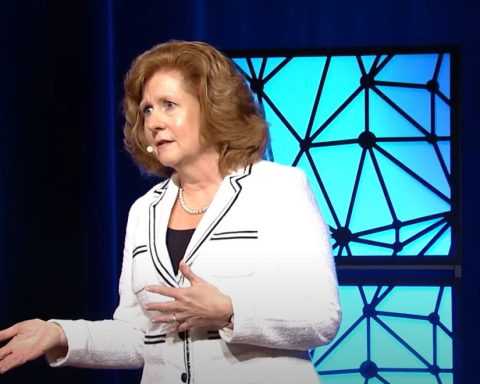My first stint as a manager was in the safety engineering department of an energy company. I was the youngest of three supervisors, and a few months in, I found myself sequestered in a brightly lit conference room with my manager and two peers for a team appraisal meeting.
We were each tasked with evaluating the performance of our respective team members, using a tool called the 9 box grid to distribute our ratings along a bell curve. Because of how the grid is structured, 10% of the employees would inevitably be categorized as “below expectations,” 80 to 90% would fall into the “meets expectations” category, and 0 to 10% would fall under “exceeds expectations.”
Once we assessed and agreed upon the high-performing team members, it was time to discuss the performance of those who hadn’t consistently met our expectations.
“I’ve rated Karla as below expectations,” Ben said.
I was surprised. Although Karla was Ben’s direct report, she had worked closely with my team on many big projects. She’d consistently delivered on our goals and was a strong team player. I was curious to know how Ben had reached his decision, but being the youngest and newest manager in the room, I was hesitant to bring it up.
I took a few deep breaths and went for it.
“What I have observed, and heard from my team, is that Karla always delivers timely and quality reports. My team wouldn’t have been able to do their job without her support. I’m curious to know what you’ve noticed that would put her in the below expectations category, Ben?”
“She missed a deadline on a critical report for the vice president. I had to step in to get it done.”
To my knowledge, the incident Ben was referring to was a last-minute request (and a time-consuming one at that). It had required Karla to learn a completely new software and was a single instance — albeit an important one.
I probed further. “Was Karla familiar with the software program required to complete the task? Did she have all the data necessary at hand?” More specifically, I wanted to know if there was any other evidence of Karla missing deadlines or delivering incomplete work.
What Ben said next shook me.
“Don’t worry, Karla probably won’t be staying here that long.” He let out a long, dismissive sigh. “She has two kids, and her husband works. Besides, she’s only working part-time anyway.”
My stomach somersaulted. I could feel the heat rising in my neck. What does Karla’s personal life have to do with her performance? I almost retorted. There were several employees on our team with families. And what was up with his tone?
Ben clearly had a bias, and he seemed unaware of it.
The Ubiquity of Blind Spots
When I was in college, I learned about the Johari window — a framework used to gain greater insight into our conscious and unconscious biases. The tool consists of four quadrants that help you identify what you know about yourself and what others know about you. We all have things that fall in each quadrant, and if we spend a little time with this exercise, we can increase our self-awareness.
The Johari Window
| Known to self | Not known to self | |
| Known to others | Open self: Biases known to self and others | Blind self (blind spot): Biases unknown to self but known to others |
| Not known to others | Hidden self: Biases known to self but not known to others | Unknown self: Biases unknown to self and others |
| Source: Joseph Luft and Harrington Ingham | © HBR.org | |
For the purpose of this article, let’s focus on the things that are not known to us — our blind spots.
Often, blind spots are biases we have unknowingly formed throughout our lives. They typically originate from messages we observed or were taught growing up, and have now internalized as adults. As in Ben’s case, blind spots can show up as microaggressions based on someone’s race, gender, age, education, religion, caste, or class, among other things. Common examples of microaggressions include asking someone where they are really from, asking Black or brown folks to explain why race still matters, or gaslighting someone when they share a difficult experience at work.
Becoming aware of our hidden biases is a critical first step towards change. Once a negative bias or blind spot surfaces and is explored, it’s easier for us to see how it clashes with our self-perception or our values.
Now let’s return to my initial conversation with Ben. When he finished sharing his opinions about Karla, an air of silence filled the room.
I wondered if I was the only one baffled by his words. My mental monologue continued: Am I reading too much into this? Should I let it go? Should I wait for a one-on-one or should I speak up now?
Karla was a college-educated woman and mother of two. She was a woman of color — in fact, the only one on our team of more than 20 employees. Working part-time was an accepted practice at our company.
The longer the silence prolonged, the more I felt compelled to share my thoughts. After all, the goal of the meeting was to leave in agreement on the overall team evaluation, and I wasn’t in agreement.
I took a leap.
I pointed out that Karla’s personal decisions had nothing to do with her performance. Our job, as supervisors, was to look at an employee’s performance against the goals set for them. Thankfully, our boss agreed and said we needed to take the time to discuss each employee’s contributions and not allow assumptions or potential biases to cloud our evaluation. The ultimate outcome was a decision that everyone agreed with and supported.
How to Speak Up For What’s Right
Speaking up is always a challenge, but when you are doing so to point out someone else’s blind spots, it can be even more difficult. That said, with some practice and preparation, you can get better at it — and you should.
Ninety percent of our decisions are automatic or unconscious. This means that our blind spots or unconscious biases show up regularly, and they influence our behaviors, narrow our perspectives, hamper our decision-making qualities, and harm others. Particularly for employees in leadership positions, it’s important to develop the skills to recognize both your own and your peers’ blind spots in order to lead fairly and protect your team.
In the situation with Ben, keeping quiet was my initial instinct. Taking a pause to evaluate my fears, however, helped me realize that remaining silent would compromise my values and be a disservice to my employees.
If you find yourself facing similar challenges at work, here are some ways to raise your voice.
1) Start a dialogue.
It may be hard to speak up, especially when you’re inexperienced or new to a role. But no relationship should make you feel powerless. Know that you are entitled to share your views, especially related to unconscious biases. Lead the conversation with a sense of curiosity, not judgment, and nudge them to do better.
Before you speak up, consider the group dynamics. If you feel uncomfortable speaking up in the moment, try scheduling a one-on-one conversation with the colleague who has expressed a bias. You can be upfront about your observation. Don’t apologize or feel guilty for sharing your thoughts. Instead, tell them how their words made you feel and work with them to come up with solutions around how to move forward.
2) Share your observations using first-person (“I”) statements.
You can’t know whether someone will show gratitude or resistance when you raise a red flag. But it’s important to not focus on their reaction too much. Remember that keeping quiet allows a potentially harmful behavior to continue and can negatively impact everyone — especially those who are junior to you. The key, then, is to share your point of view. The best way to do that is to use first-person statements and emphasize the “I”.
For example, if you notice a peer interrupting a junior colleague or an intern, say, “Mark, I noticed that Latish was trying to share her perspective. We should let her finish her thoughts before moving ahead. I think it’s important that everyone gets an equal voice so that we can make a well-informed decision.”
If you’re not able to do that, let your colleague finish, go back to the person who was being interrupted, and say, “Latish, I know you were trying to say something a while ago. Your contributions are very valuable. Would you like to share them with us now?”
The idea is not to prove Mark right or wrong, but rather, to state your observations in a way that helps everyone move forward. When you shift the focus of the conversation to a personal statement, it’s likely to make people less defensive and more open to addressing the issue. If possible, you can also meet with Mark after that meeting or in a one-on-one conversation to share your observations and engage him in a dialogue.
3) Be vulnerable.
Be willing to share your own stories of blind spots and weaknesses. Show your colleagues that you’ve been there, and you understand it can take time to make a change. Sharing your story with others helps demonstrate to your team that no one is infallible. The more open and honest you are, the more psychologically safe your peers are likely to feel to make mistakes and learn from them.
Long ago, my direct report, Jason frequently came into my office with a problem and I’d always give him the solution. I felt I was living my value of helping my team. However, a peer asked me how giving Jason the solution was helping him grow and improve his ability to solve problems. I realized that I believed my job as a leader was to have the answer, instead of helping my team learn and develop a problem-solving mindset. Hello, blind spot!
The next time Jason came in with a problem to solve, I communicated that I wanted to give him the opportunity to share his solutions rather than automatically sharing my perspective. Surprisingly, Jason appreciated this gesture, started to brainstorm his ideas, and came up with a solution that was far better than mine. Turns out, he just needed a sounding board and to know I’d back him up on whatever solution he arrived at — within reason.
Yes, speaking up is tough and it takes courage, especially when you’re in the early stages of your career. But know that by speaking up you’re doing your part in creating more inclusive workplaces where everyone feels heard and respected.
By Carmen Acton




